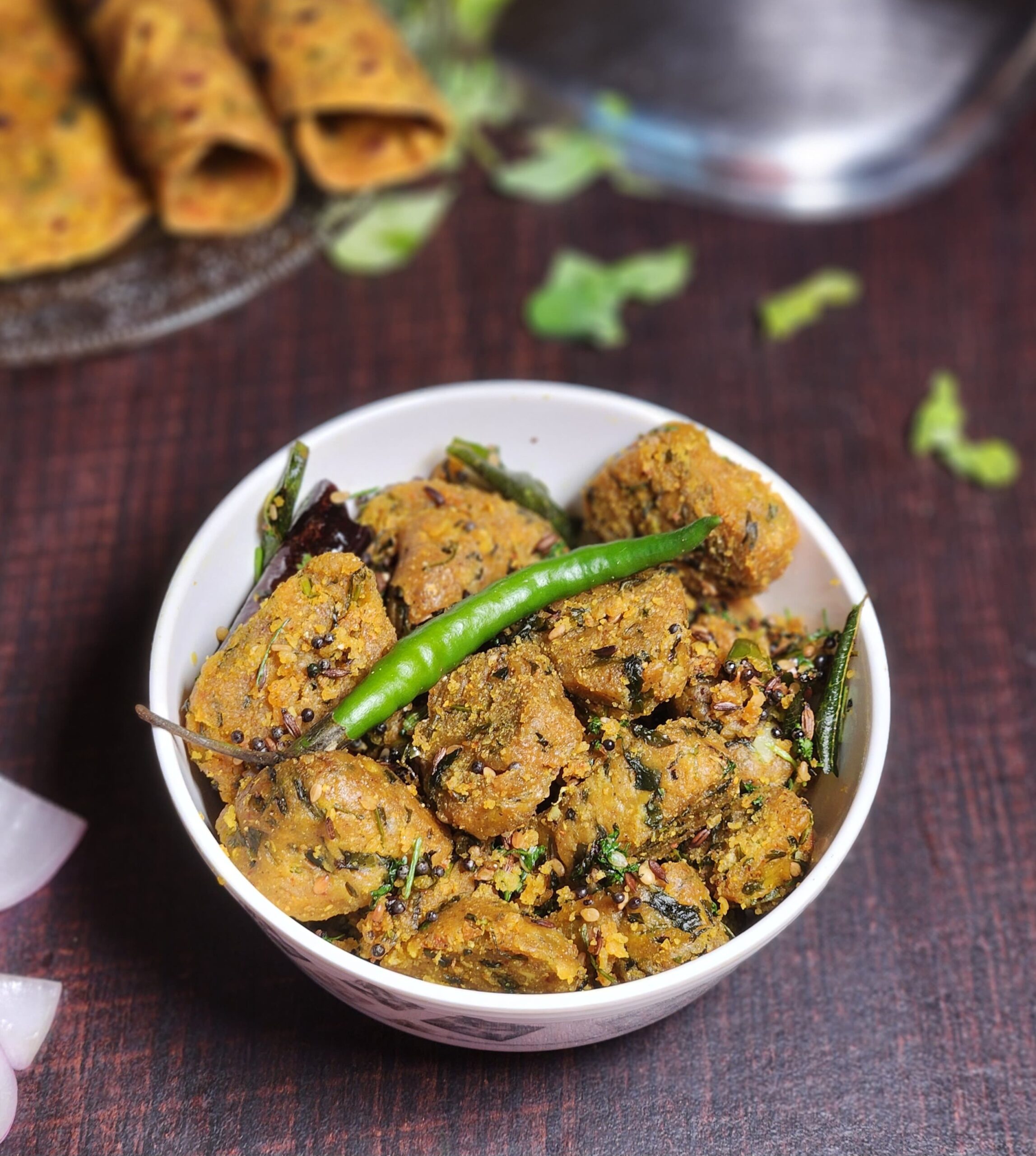
For the dough:
| Jowar flour | 1 cup |
|---|---|
| Whole wheat flour | 2 tablespoons |
| Bottle gourd (grated) | 1/2 cup |
| Coriander (chopped) | 2 tablespoons |
| Salt | 1/2 teaspoon |
| Turmeric powder | 1/2 teaspoon |
| Chilli powder | 1/2 teaspoon |
| Water | 1/4 cup |
| Oil | 1 teaspoon |
For tempering:
| Mustard seeds | 1 teaspoon |
|---|---|
| Cumin seeds | 1/2 teaspoon |
| Asafoetida | 1/8 teaspoon |
| Curry leaves | 2 sprigs |
| Dried red chilli | 1 chilli |
| Oil | 1 teaspoon |
What You Will Need
Cup measures, a tablespoon and teaspoon, a steamer or idli steamer, a plate, one pan, a knife.
Instructions
Grate the bottle gourd and squeeze out any excess water.
Mix the bottle gourd with all the ingredients listed for making the dough.
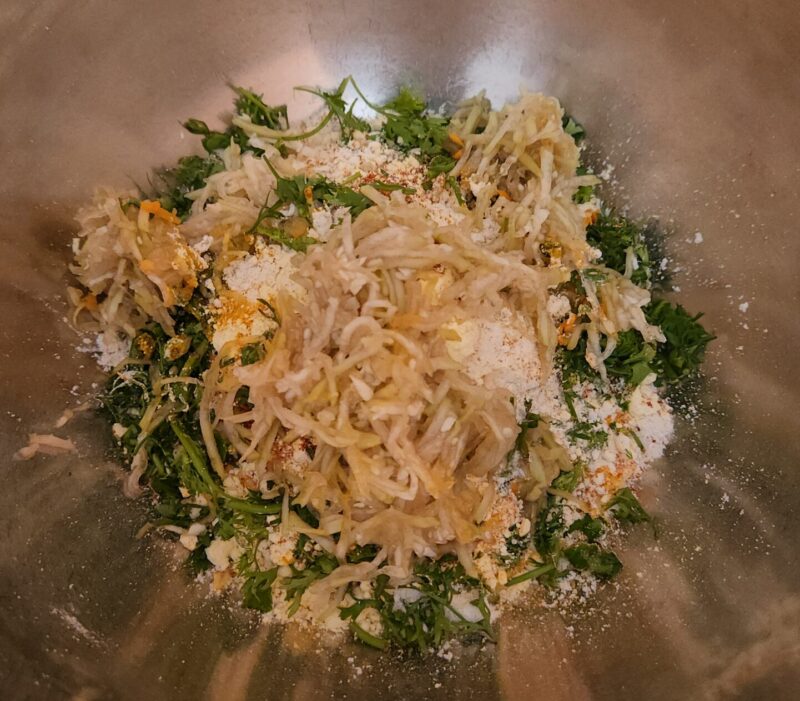
Knead all the ingredients together. The water used should be room temperature, to achieve a soft dough.
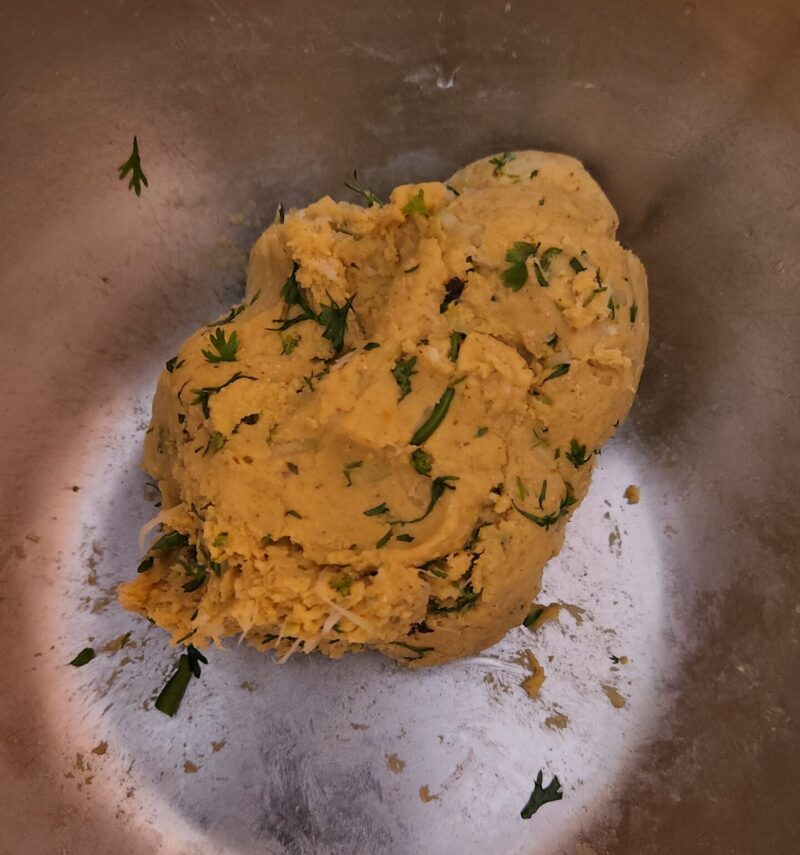
Break up the dough into even pieces, then shape them into logs. Each log should be about the shape and size as it fits inside your closed fist.
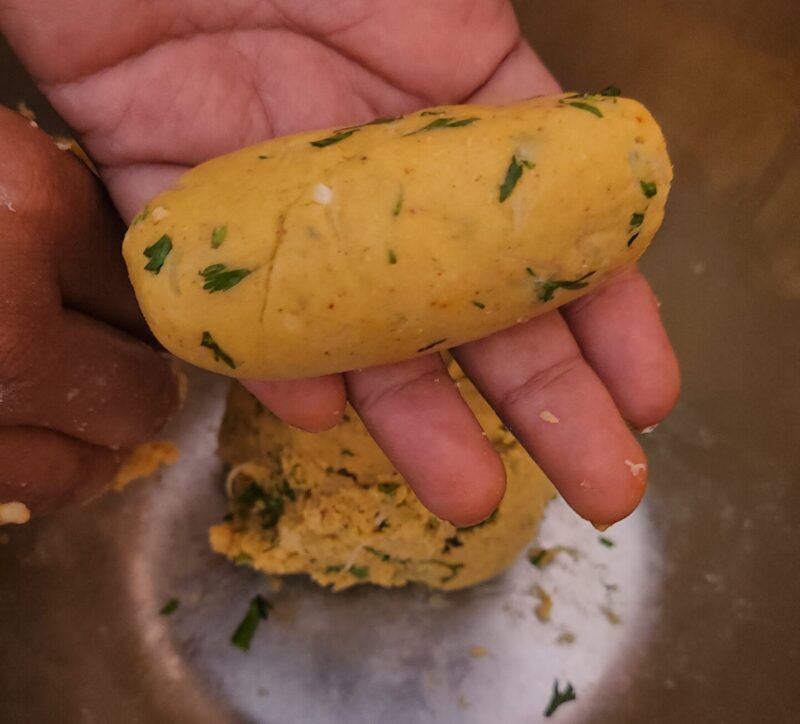
Take a steamer or an idli steamer; remove the steaming trays. Fill the vessel with water, about two inches.
Turn on the stove, keeping the flame medium-high, then place the steamer on the stovetop. Bring the water to a gentle boil.
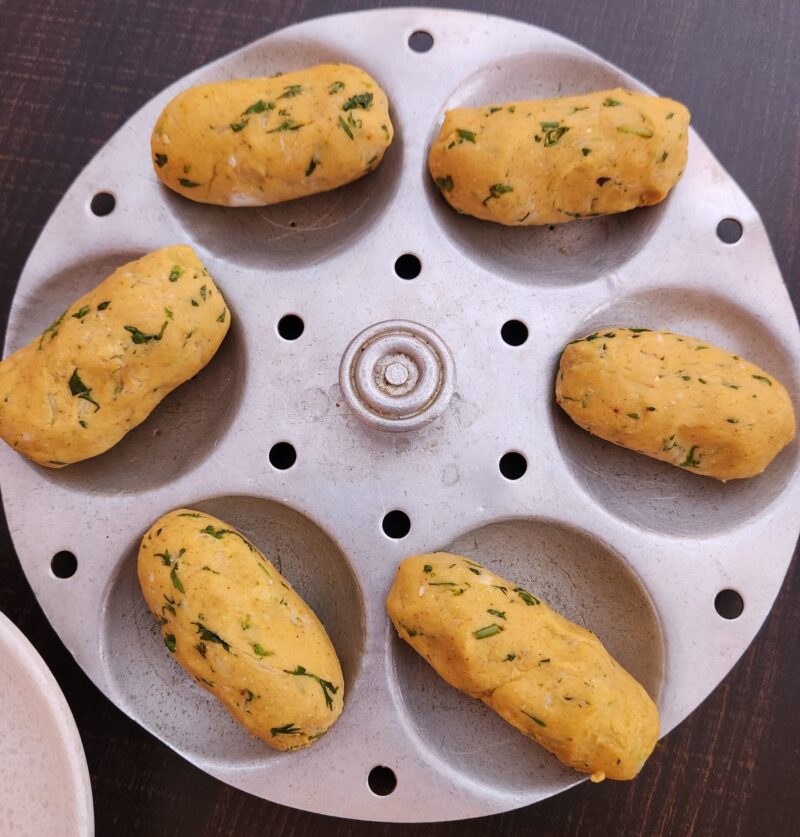
Meanwhile, grease the steaming trays with oil, and place the muthiya logs on the greased trays.
Once the water is boiling, carefully place the steaming trays inside the vessel. Ensure that the trays are above the water level. Cover with the lid.
Steam the muthiyas for 25 minutes.
Turn off the flame, remove the steamer from the stovetop, and allow the muthiyas to cool after steaming.
After cooling, cut the logs into smaller, bite-sized pieces.
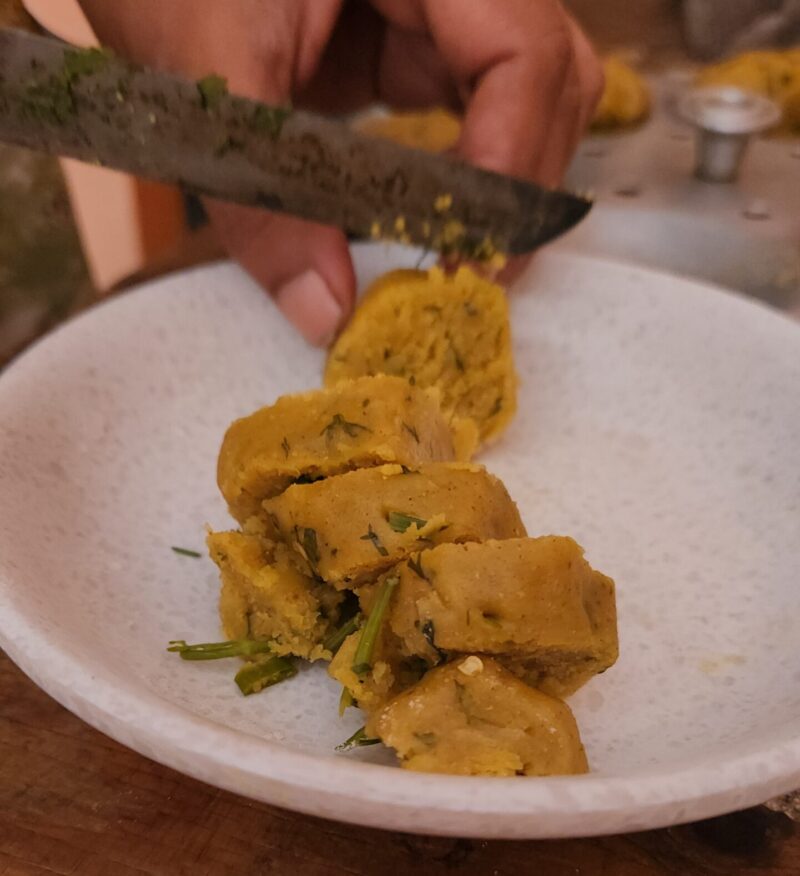
Place a pan on the stove and turn on the flame to medium-high. Add oil to the pan and let it heat up.
Once the oil is hot, add the mustard seeds, cumin seeds, asafoetida, curry leaves, and dried red chilli to the oil, and wait until they begin to sputter.
Add the chopped muthiyas to the pan and fry them until crisp, about a minute or so on each side. Do not turn them frequently as they may break.
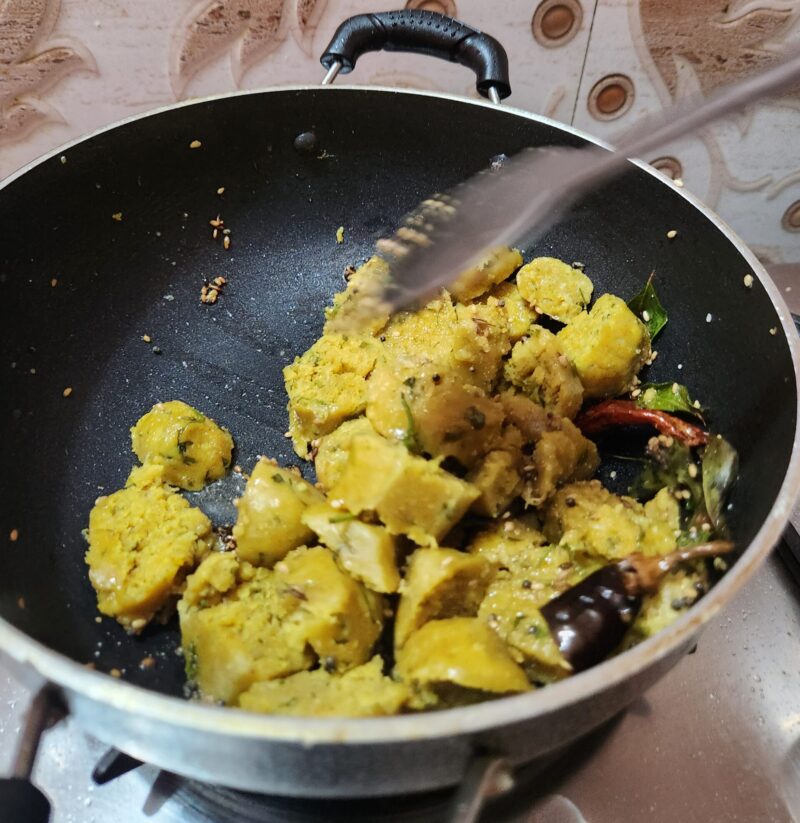
Serve with green chutney, ketchup, or other condiments.
Tips
If you don’t use bottle gourd in the recipe, use more water to ensure the dough reaches the right consistency.
Variations
- You can replace the bottle gourd in the recipe with other vegetables like grated carrot or beetroot, or even chopped leafy greens like fenugreek. Adjust water accordingly.
- You can replace the whole wheat flour with gram flour to make the muthiyas gluten-free.
- You can replace the jowar flour with bajra flour during winter.
- Consider adding the muthiyas to undhiyu and serve it with rice or rotis for a full meal.
Tejaswi Rathod is a sociology graduate who, along with her mother, co-founded a brand called Relic Treat with millets as its backbone. Their business is focused on producing wholesome millet flours, nourishing dry snacks, and fresh millet-based meals with the goal of promoting both sustainable agriculture and good eating.
You must be logged in to rate this recipe.

Sign in with email
